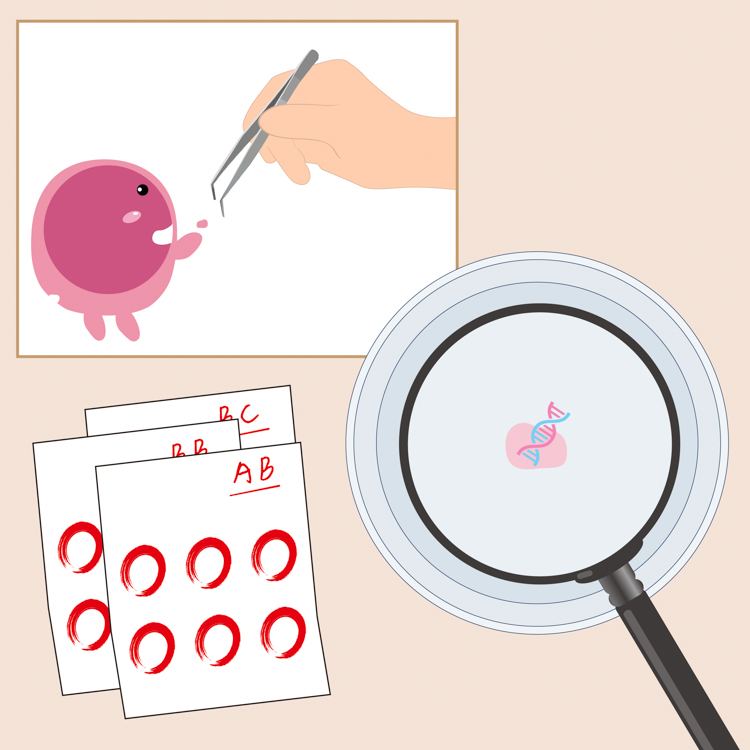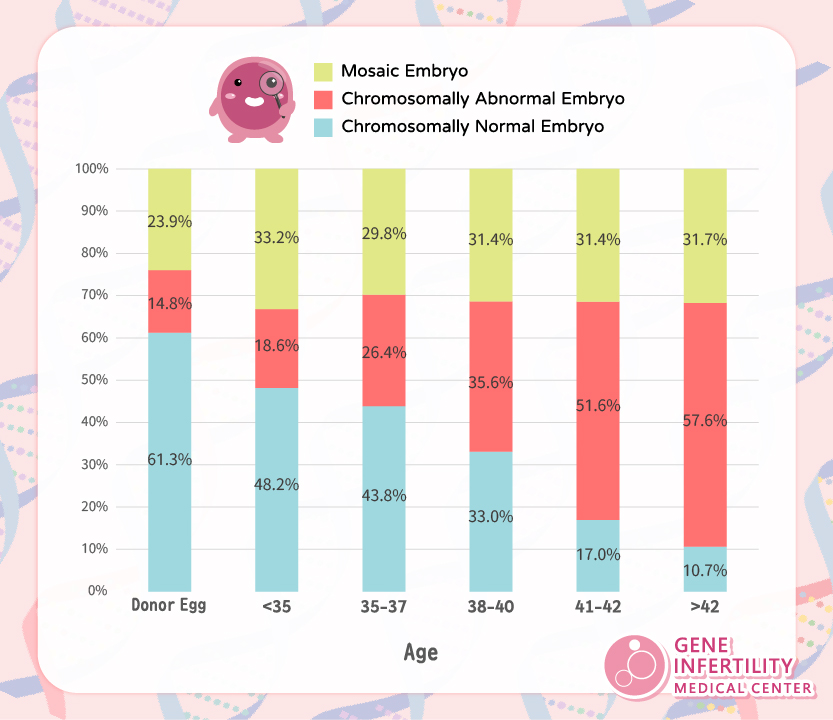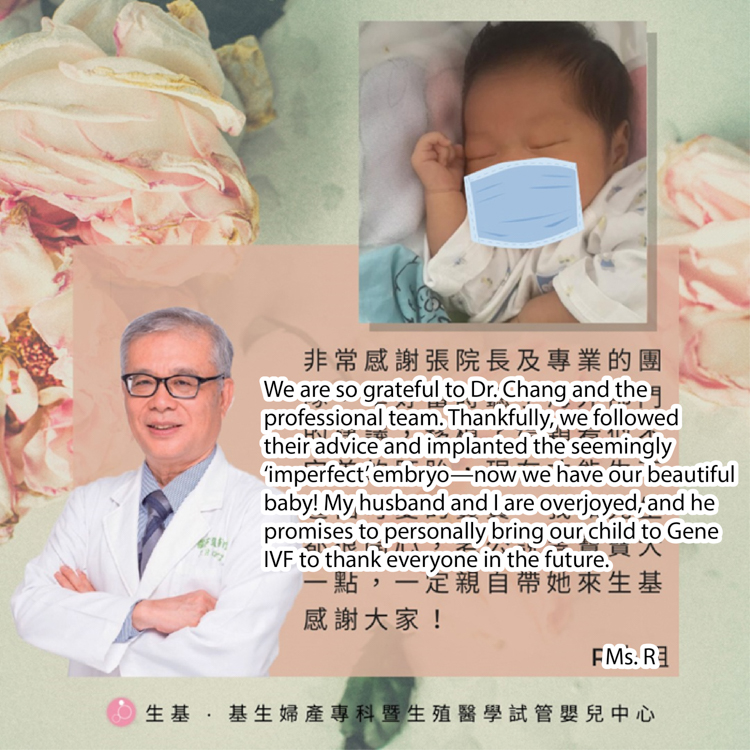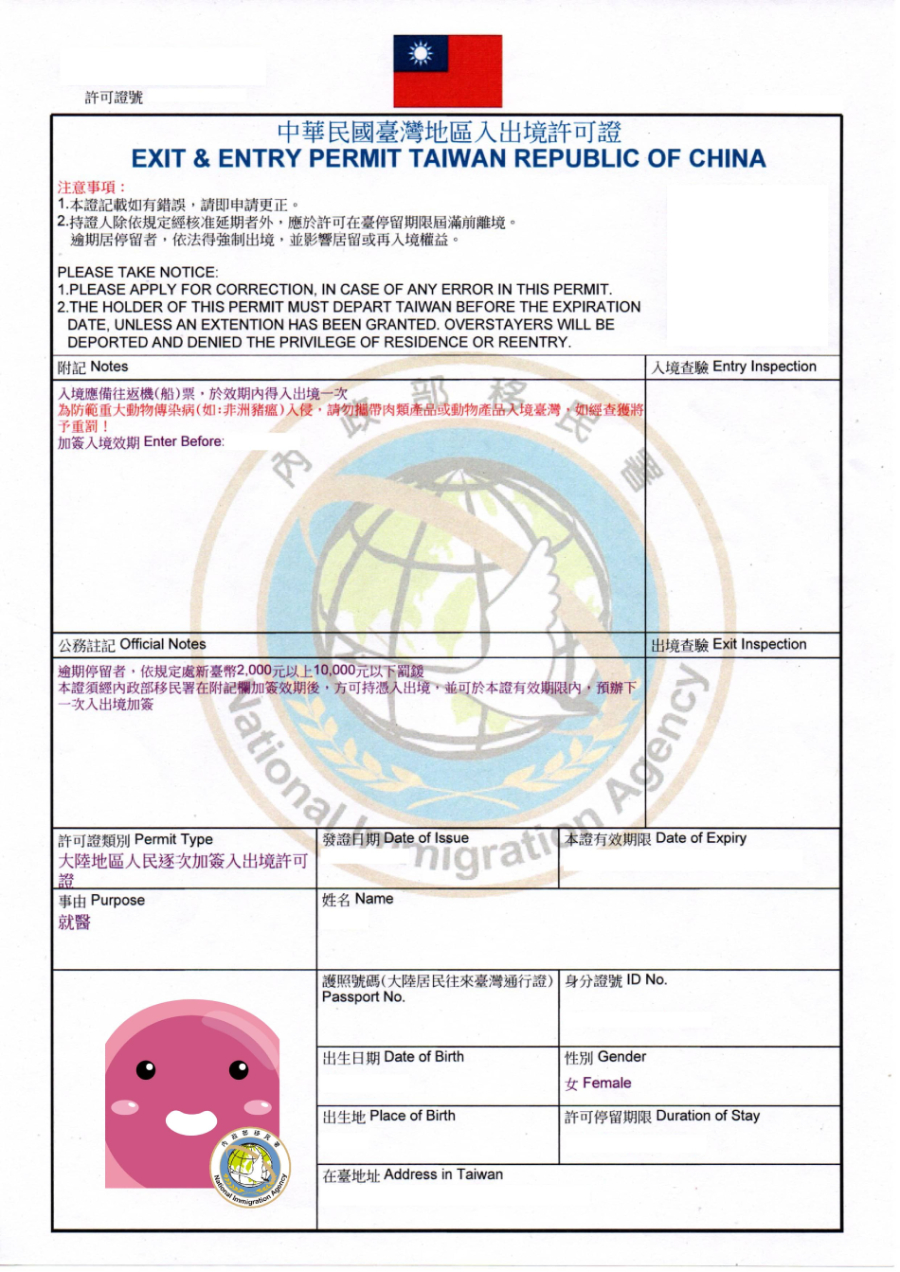To provide you with a better browsing experience, this website uses cookies to record and analyze user behavior. The collected data is used solely for statistical and improvement purposes and will not be used to identify you personally.
You can disable cookies in your browser settings, but some features of the website may not function properly.
By continuing to browse this site, you agree to our use of cookies and privacy policy. 👉 View Full Privacy Policy。
Knowledge
Doctor’s Column
06/30
2022
【Doctor's Column】What are PGT-A and PGT-M?
Author: Dr. Chang Fu-Hsuan, Chief Medical Director
I often hear patients say during consultations:
“My friend did IVF with GPS, so I also want to do it!”
At that moment, I immediately understand that what they are referring to is PGS, which is actually what we are going to discuss—PGT-A.
There are many abbreviations in IVF, making it easy to get confused. So, do we need to undergo PGS, PGD, or PGT?
First, we need to understand what these tests are before deciding on the right treatment.
PGS and PGD are outdated terms, and PGT is the revised term.
PGT (Preimplantation Genetic Testing) is a general term covering two categories:

PGT-A – Preimplantation Genetic Testing for Aneuploidy
This test checks for chromosomal abnormalities, such as aneuploidy, large chromosomal deletions, or translocations. It is equivalent to the previously known PGS (Preimplantation Genetic Screening).
Recommended for:
♦ Recurrent miscarriage
♦ Multiple implantation failures
♦ Older couples
♦ Family history of chromosomal abnormalities
A global study examining 10,000 embryos through PGT-A yielded the following results:

PGT-M – Preimplantation Genetic Testing for Monogenic Disorders
This test detects single-gene disorders, helping couples with known genetic conditions avoid passing them on to their child. It is equivalent to PGD (Preimplantation Genetic Diagnosis).
Whether you need this test depends on a thorough consultation with your doctor.
Mosaic Embryos
Embryos that test normal via PGT-A are the top choice for implantation. However, for patients with low ovarian function, advanced maternal age, or chromosomal abnormalities, the number of viable embryos may be limited. If only mosaic embryos remain, they can still be considered for transfer.
What is a mosaic embryo?
A mosaic embryo contains both normal and abnormal chromosomal cells. PGT-A results for these embryos fall between “normal” and “abnormal.” As maternal age increases, the percentage of normal embryos decreases, and around 40% of abnormal embryos are classified as mosaic.
However, a mosaic embryo still has the potential for implantation. If successful, standard prenatal care, including NIPT and amniocentesis, is recommended to monitor fetal development.
Success Stories
►Case 1
Mr. and Mrs. T from Chongqing, China, decided to pursue IVF because the wife was over 40 years old.
After an online consultation with Dr. Chang, he recommended IVF with PGT-A to ensure chromosomal normality before implantation.
On the egg retrieval day, 7 eggs were retrieved, and 4 embryos successfully developed into blastocysts for testing.
When the results came in, two embryos were chromosomally normal. Mrs. T chose to transfer both, and both embryos implanted successfully.
Their boy and girl twins were born in August 2019.

►Case 2
Ms. R and her husband, an overseas couple, consulted Dr. Chang for IVF.
Due to low ovarian function, Ms. R retrieved five eggs, and two embryos developed into blastocysts for testing.
When the results came back, one embryo was chromosomally normal, while the other was mosaic.
Ms. R chose to transfer the normal embryo first, but unfortunately, it did not implant.
Feeling disappointed, they consulted Dr. Chang, who suggested MIRA (Endometrial Receptivity Testing) and discussed either a second IVF cycle or transferring the mosaic embryo.
After careful consideration, Ms. R decided to transfer the mosaic embryo.
This time, she successfully conceived, but she was worried about possible chromosomal abnormalities.
At 20 weeks, she underwent an amniocentesis test, which confirmed the baby was completely healthy.
Their baby was born at the end of July 2019.









